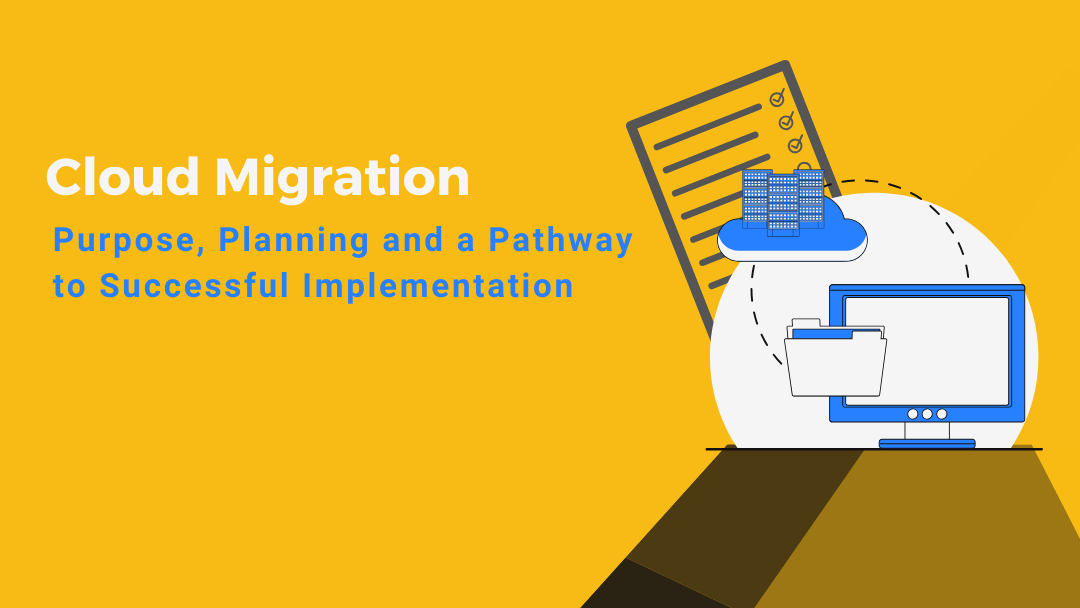Cloud Migration - Purpose Planning And A Pathway To Successful Implementation
The purpose of cloud migration
Cloud migration is the process of moving your IT workloads from your on-premise location to a cloud-enabled environment. Well-known players that are cloud-based include Microsoft Azure, AWS and Google Cloud.
Whether your cloud hosting is owned or managed by you or a cloud services provider, there are two core purposes of cloud migration:
Lifting and shifting your existing workloads, which is the most common scenario for cloud adoption where you work with a managed service provider to migrate legacy applications to the cloud and therefore ease your overall efforts
Refactoring your applications to make them compatible with a cloud-enabled environment, commonly typical for larger enterprises where a mix of developers, system integrators and cloud certified professionals are involved.
In this article, I’m going to focus on ‘lift and shift’ where cloud migration strategies tend to currently lean more towards.
Strategizing and planning
At this point, you’ve already made a decision to move to the cloud and may have also identified a suitable cloud services provider you’ll be working with. If you need help choosing the best cloud hosting service provider for your small business, read this article for tips.
In developing a strategy, focus on the desired business outcomes and constraints. Why? Because both your goals and challenges are going to be the main driving factors for your decision to move to the cloud. It’s also worth considering whether you’ll make a complete or partial migration.
Here’s an example tabulated below:
What does each area mean? Let me help define it for you:
Software – includes business applications for various department tasks such as project management, estimating, accounting, scheduling and customer relationship management (CRM). Key areas to pay attention to is the number of active licenses, included support package, maintenance and version upgrades.
Platform – just like infrastructure, platform involves servers, storage and networking, but also self-managed application and data tools. Windows and SQL are commonly used platforms over cloud.
Infrastructure – consists of application servers, database servers, storage and file back-ups. Everyone from CIO’s to small business owners are taking steps to prepare their IT structure to accommodate digital transformation. Your needs may be more complex than initially estimated, so explore your required infrastructure well before cloud adoption happens.
Resources – this is the human element of the entire migration process, whereby you identify the different roles and responsibilities from within your organization. If you’re working with a service provider, often they will help you make a smooth transition by outlining your resources.
Evaluation – what, why and who?
In planning migrating to the cloud, decide what needs to be moved to the cloud and why. Will this involve only some business applications or your complete line-up of apps, storage and backup?
Common reasons for cloud migration can include shutting down your data center so it can be managed by a third-party vendor rather than inhouse. Our client Armada Hoffer stated that their number one reason to migrate was to minimize their data center footprint from both a cost and resource standpoint.
Perhaps support for hardware is coming to an end or your IT assets are becoming obsolete? Capital costs for not only procuring servers but also upgrading and maintaining can be translated into unnecessary operational expenditure.
Reducing downtime and improving performance are other great justifications for cloud migration.
The most important factor to consider is who the decision-maker is during the process. From my experience helping businesses transition to the cloud, the success of cloud adoption hangs on the involvement of the decision-maker. I’ve seen migration projects grind to a halt or completely change course based on whether the decision-maker was involved during initial stages.
The path to successful implementation
The scope of migration will vary based on the size of your organization and allocated resources. Keep in mind that at no point in time should you suffer disruption to your business during the migration process. Therefore, include a proof of concept or test phase in your plan, followed by the actual transition. By replicating your current set-up to the cloud on-premise, you can get firsthand experience of the desired outcome and ensure the constraints are addressed.
During the testing phase, allocate a small user group who could evaluate the proposed cloud-based environment and provide feedback. Getting participation, comments and buy-in by users is critical for the migration project’s success. Also, consider drafting a training plan for users involved in the migration phase so they’re able to quickly adapt to the new technologies. After user acceptance, you’re ready for the actual move.
The final move involves replication of the test environment and should, therefore, be fairly straight forward. However, be sure to set a realistic schedule that includes cut-over, transfer and configuration. Generally, these things can take a little longer than initially anticipated, which is why it should be clearly outlined in your plan.
Once the final transition is complete, closely monitor the new environment for performance issues and accessibility to data. Keep the user experience in mind; after all, the purpose is to improve productivity and make your employees’ jobs easier!
If you want to learn more about cloud hosting, we have further resources you can access through our blog. We’re more than happy to help you be digital-ready in 2020. For questions or comments, reach out to me by email sales@aeccloud.com or call (212) 505-0381.

